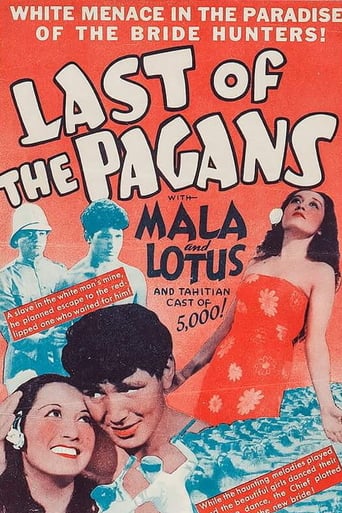

I have a sort of on-the-fence feel about this film. I know this is a result of its time, including clichés of the Polynesian people that you have to take with a grain of salt. The 1930s were not exactly a time period of embracing diversity and fighting against racism. It also includes certain tropes of adventure movies that are sexist, such as the main male character Taro kidnapping his bride Lilleo from another island because "that's what his tribe does". Followed by her falling in love with him through what is basically Stockholm Syndrome. That being said, this is one of the few early Hollywood movies I have ever seen which tried to show the abomination of enslaving a group of people. It doesn't do it well, but it gets a C for effort. The film shows everything through the eyes of Taro and the other Polynesians. You see their lives and hear their language (which was probably a Hollywood, bastardized version of a Polynesian language- I'm not entirely sure). They are simply people living out their daily lives, although their daily lives are made out a little like a travel brochure. You see the way the islanders are tricked by by the mining company and then worked to exhaustion. Despite the cheesy romance and rather slapped together ending, this has the underlying message of the cruelty of stealing another person's life for greed. Overall, it is still tame in comparison to history. Also, I understand this is credited as being, in part, based on Herman Melville's Typee, but I really didn't see many similarities except for a few of the customs of the islanders. All in all, it is a beautifully photographed movie and deserves some recognition for it's attempt to be different in its storytelling.
... View MoreDated (meaning racist) tale of love among the island people of the South Seas. Two young lovers are separated by slavers when the man is taken away and forced to work in a mining camp. Shot on location in Tahiti, the visual elements of the film are the most appealing aspect of the movie. The characters are paper thin and situations are awfully contrived, though an underwater fight with a shark and some other disaster sequences are pretty exciting for a film shot in 1935. Loosely based upon Melville's "Typee," this film is hardly a classic, but it's entertaining enough.
... View MoreI recently had the opportunity of viewing this film. It is in black and white and was made quite some time back, but is well worth seeing.Concerning French Polynesia, much of the dialogue is non-English, and the translations are a bit scarce; but not needed much--the actions of the characters and what happens to them tells the story quite adequately.The native men from one island go to another island to steal wives for themselves. The main male character, Taro, kidnaps a woman he especially fancies. She is very unhappy about this--and I fully expected him to drag her back to his island and immediately start raping her, but that is not how it happens. Instead, once he gets there, he courts her-and she begins to become quite taken with his charms.However, there are white men looking for labor for their mines, and the chief in Taro's village is also taken with the woman Taro wants. You can be sure these things come to plenty of troubles for both Taro and his intended.This film was quite different from any I have ever seen before. It was excellently done and well told and I would certainly recommend it.
... View MoreThis is one of those Romances of the South Seas that MGM liked to offer its patrons every year or so. This one is based on Herman Melville's TYPEE, which I was spared in college and never got around to reading on my own.I'll take a moment to speculate that the reason Melville was so adaptable to the movies was that at the heart of his boring, obsessively-detailed novels, there was always a good adventure yarn. Screenwriter John Farrow has whittled this one down to a Rousseau-style Romance of the Noble Savage. The Polynesian lovers are played by Mala, who was an Inuit, and Lotus Long, who hailed from exotic Atlantic City. Richard Thorpe, beginning his long career for Metro, got good performances out of the leads, who speak in what I guess is a Polynesian language, extensively subtitled. They undergo courtship, traders who kidnap Mala to work in a collapsing guano mine, and a big storm. Will true love be denied? While the screenplay is hobbled by the Production Code, the photography is superlative, shot by location specialist Clyde de Vinna. If you can turn your ears off, you'll see a fine little silent film here, with some spectacular views.
... View More